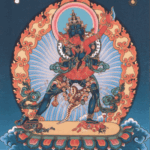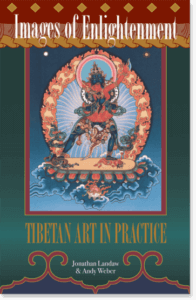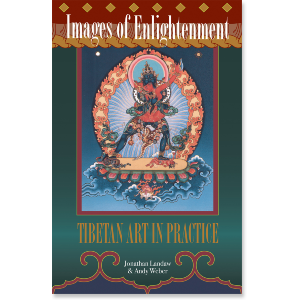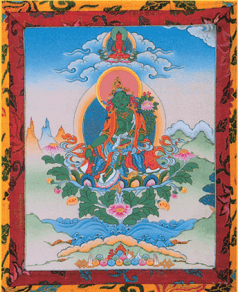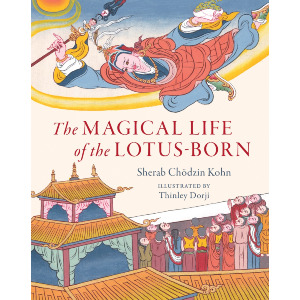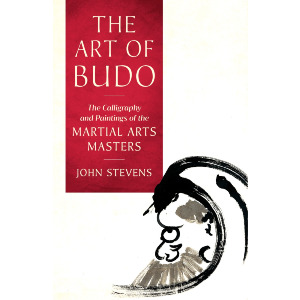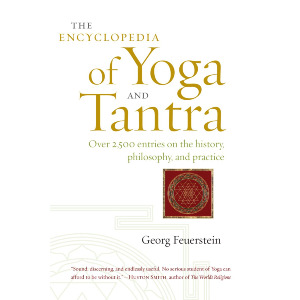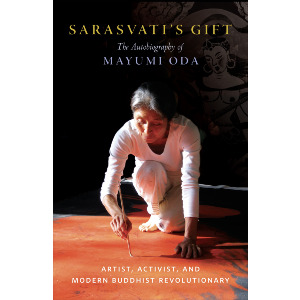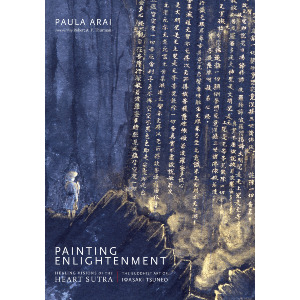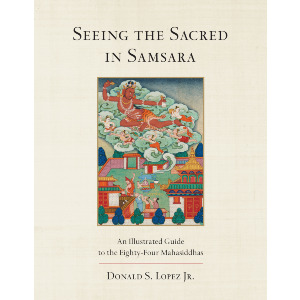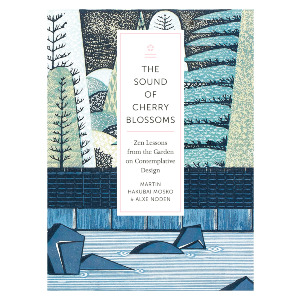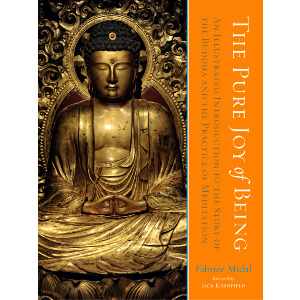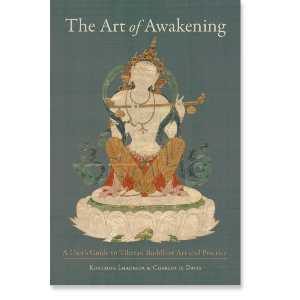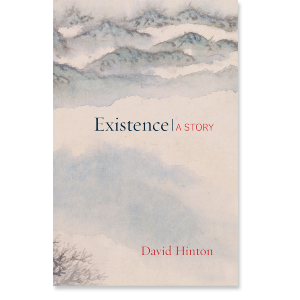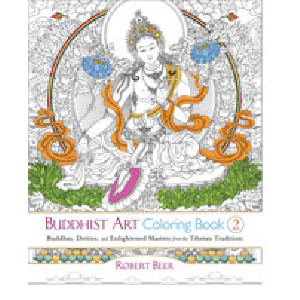| The following article is from the Summer, 1997 issue of the Snow Lion Newsletter and is for historical reference only. You can see this in context of the original newsletter here. |
Images of Enlightenment
Tibetan Art in Practice
By Jonathan Landaw & Andy Weber
Images of Enlightenment answers the need for a clear and straightforward guide to the inner world of Tibetan Buddhist sacred art. Focusing on many of its most important and representative figures, this richly illustrated book introduces the tradition of spiritual self-transformation embodied in these depictions of enlightened energy through clear iconographic representations and descriptions.
"Among the few guides we have to the immense richness of Tibetan religious art, Images of Enlightenment stands out for the way in which depictions of Buddhist deities are grounded in concise yet detailed descriptions of the meditative practices in which those images would be used. Indeed, this is much more than an art book; it is a potent introduction to Tibetan Buddhism."— Dan Cozort, Dickinson College
"...a concise introduction to the fundamental points of tantric Buddhism as practiced in the Tibetan traditions."— The Mirror
The following excerpt is from Images of Enlightenment
Chapter 6: A Living Tradition (The story of the life of Atisha)

Atisha
Just as Padmasambhava is beloved as the master primarily responsible for establishing Buddhism in Tibet, Atisha (982-1054) is revered as the one who revitalized it after the bitter persecution by King Lang-darma. Born the second son of a royal family in Bengal, Atisha showed such signs of intelligence and good character that he was chosen as heir to his father's throne. When he was eleven years old and, in accordance with the prevailing custom, about to be married, the deity Tara appeared to him vividly in a dream and warned him against committing himself to the worldly life. Atisha managed to avoid the intended marriage and, giving the excuse that he wished to go hunting, persuaded his parents to let him leave the palace grounds. His actual purpose, however, was to find a spiritual mentor.
He met a succession of teachers, including Vidyakokila the Elder and Avadhutipa, and eventually received initiation into the highest yoga tantra practice of Hevajra from the master Rahulagupta. When this great yogi saw that his young and eager disciple was still not free of his parents' worldly expectations for him, he devised a plan to win Atisha his release:
[Rahulagupta] sent him back to the palace with eight of his disciples, four male and four female, dressed scantily in the bone ornaments of [advanced Vajrayana practitioners).
For three months Atisha stayed in the environs of the palace with these strange new companions, behaving in a completely unconventional and outrageous manner. In the end his parents were forced to give up all hope for their precious son. Thinking him to have gone mad, they gave full permission for him to leave with his rather unsavory-looking friends and be gone once and for all.
Atisha was now able to devote himself to intensive spiritual training. He studied the profound Middle Way view of reality under Avadhutipa, a lineage holder of the wisdom teachings, and received further empowerments into Vajrayana practice. At the age of twenty-nine he took the robes of a monk on the advice of Rahulagupta and received the ordination name Dipamkara Shrijnana, Lamp of Primordial Wisdom.
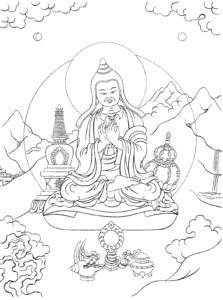
Atisha
Although he continued to receive many profound teachings and deep realizations, Atisha remained dissatisfied. Then his vajra master Rahulagupta told him:
It does not matter how many clear visions of tantric deities you receive, you must train to develop love, compassion and the totally dedicated heart of bodhichitta.
Following this advice, Atisha devoted himself to the practice of Avalokiteshvara and set out to receive the instructions for developing the compassionate bodhichitta from Dharmamati, the lineage holder of these extensive teachings.
Dharmamati lived in the far-off land of Suvarnadvipa, the Golden Isles, and it took thirteen months of extremely difficult travel for Atisha to make his way there. When he finally arrived he did not go immediately to see this renowned teacher, but instead spent two weeks with a group of Dharmamati's disciples, using this time to check their master's qualifications before deciding to accept him as his guru. When the two of them finally met, Dharmamati presented Atisha with a buddha statue and predicted that one day he would be instrumental in taming the minds of those living in the northern Land of Snow.
Atisha stayed in Suvarnadvipa identified by most scholars as modern-day Indonesia for twelve years and received the complete transmission of the teachings and insights Dharmamati had gained from his own spiritual masters. Then, when he was forty-five years old, he returned to India and thereafter resided primarily at Vikramashila, one of the major North Indian monastic centers. It was there that emissaries of the Tibetan king Jangchub Wo found him and invited him to return with them to Tibet and reestablish the pure buddhadharma there. Upon consultation with Tara, Atisha agreed to go.
He was fifty-three years old when he set out from Vikramashila and it took two years to complete the arduous journey to Ngari, the capital city. There the king made a request whose sincerity and simplicity pleased Atisha very much:
We do not want [teachings) that are so vast and profound we shall never be able to adopt them. What we need is something that will tame our minds and enable us to deal with everyday impulsive behavior. Please teach us the measures you yourself take.
$34.95 - Paperback
In response to this request Atisha began giving a set of discourses that later formed the basis of his most influential text, Lamp of the Path to Enlightenment. In this short work and his later auto-commentary to it, Atisha organized the entire range of teachings he had received into a pathway for the progressive training of a disciple's mind. He was able to demonstrate that the vehicles of sutra and tantra, which many Tibetan practitioners had come to feel were so different as to be opposed to one another, in fact formed an integrated whole. He was further able to counter widespread misunderstandings concerning the Vajrayana by emphasizing that moral self-discipline is the foundation upon which all successful practice must be based. As Je Tsongkhapa wrote some four centuries later:
Wherever the doctrine had disappeared he reestablished it; where it had diminished he revived it; and where it had become stained by wrong interpretations he purified it. Thus he brought dharma in Tibet into a state free from distortion.
Of the many disciples Atisha gathered during his seventeen years in Tibet, it was the layman Dromtönpa Gyalwé Jungné who received and transmitted all of the master's major lineages. When Atisha passed away at the age of seventy-two as predicted by Tara nearly twenty years earlier, Dromtönpa founded Radreng Monastery, where these precious lineages were preserved and perpetuated. Radreng thereby became the source of the Kadam tradition whose later masters, the Kadampa Geshes, followed the outwardly modest, but inwardly advanced style of practice favored by Atisha himself.
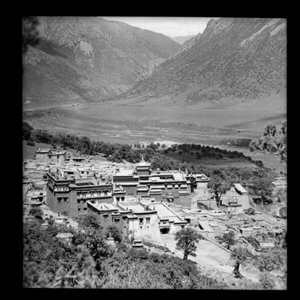
Radreng Monastery
The Kadampa Geshes placed special emphasis on the mind transformation teachings (Tib. lo-jong) that Atisha had received during his stay in the Golden Isles and had prized so highly. The following precepts have been selected from Atisha's lo-jong teachings because their direct, down-to-earth manner typifies the practical approach of the Kadam spiritual lineage:
Abandon sleepiness, dullness and laziness
And always exert enthusiastic effort.
With recollection, alertness and watchfulness
Always guard every door of the senses.
Conquer anger and arrogance
And possess a humble mind.
Whenever a pompous mind arises,
Flatten such arrogance;
Recall the teachings of your master.
When a cowardly mind arises,
Praise the sublimity of the mind.
Whenever objects of attraction or aversion arise,
Meditate upon the emptiness of both;
View them as illusions and emanations.
When hearing any offensive words,
View them as an echo.
Always stabilize [awareness of your yidam] and,
Whenever laziness or lassitude arise,
Enumerate these faults to yourself
And feel remorse from your heart.
When giving advice to others,
Have compassion and thoughts for their benefit.
Do not disparage spiritual doctrines
And be intent on whichever you admire.
Examine your speech when amidst many people.
Examine your mind when living alone.
Books Related to Images of Enlightenment
Related Online Courses:
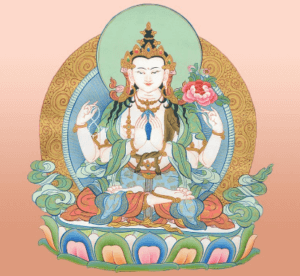

Join Judith Lief, Buddhist teacher and editor of The Profound Treasury of the Ocean of Dharma, for an online course that explores the second volume of this monumental work The Bodhisattva Path of Wisdom and Compassion. Through video recorded during a nine-day retreat she led on the subject, Lief will guide us through the traditional mahayana teachings as taught by Chögyam Trungpa, the Tibetan Buddhist master who was largely responsible for making these teachings accessible and relevant for a Western audience.

